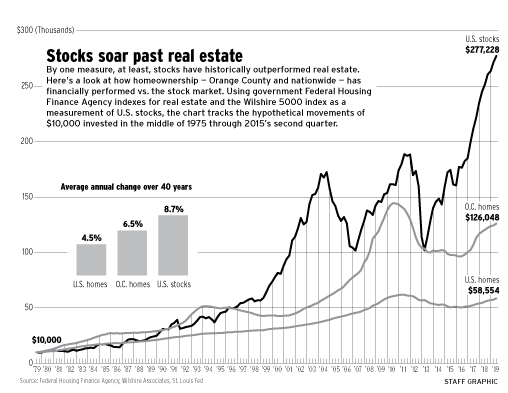What should you be saving? The answer depends on your goals. Do you want to pay off debt, start a retirement fund, or save for emergencies? The timeframe for these goals also matters. Saving money for retirement will help you achieve your financial goals faster. Here are some tips:
Pay yourself first
While paying yourself first can be a huge motivator to save money, there are some downsides to this method. First, you must understand how much you spend on a regular basis. By understanding your monthly expenses, you will be able to determine how much you can set aside every month for savings. You should check in with yourself at least twice a year to ensure that you are on track with your savings goals. Once you know how much you spend, you can use a formula to calculate how much you need to save.
Paying yourself first means putting aside money for your financial goals before anything else. This helps you avoid running out of money before you can invest or save. The idea is to transfer a portion of your paycheck to savings accounts, 401k plans, and other accounts. You should spend your remaining money only if you absolutely need it. If you can do this, you will soon be on your way to building wealth. So, start today and make it a priority to pay yourself first!
You can use the money you save each month to buy an emergency fund or pay off debt. If you have irregular income, pay yourself first to save. You can set up automatic contributions and build your savings over time. You can even save for retirement. The compound interest will allow your contributions to grow over time. That way, you can save more money for whatever you want. This method is especially useful for people who struggle with spending and are unsure of how much money to put aside each month.
In general, most people pay others first when they earn a dollar. They pay their credit card companies, their government, and others. The last thing they do is set money aside for retirement. Paying yourself first is a proven way to build wealth and retire rich. And it doesn’t have to be hard. You’ll feel the results in no time. It’s simple and can even be a great way to pay off debt and build wealth.
Saving for retirement
As you begin to plan for your retirement, it’s important to take a look at your latest Social Security statement and create a my Social Security account to figure out how much you’ll receive when you retire. Remember to factor in new expenses like a vacation home mortgage, downsizing your home, and other life changes as you plan for retirement. Your time horizon should also be considered, as well as your risk tolerance.
The 15% saving guideline assumes that you’ll retire at age 67, which is generally the age when full Social Security benefits will begin. If you plan to work longer, your savings rate will need to be higher than 15% per year. If you expect to retire at a younger age, you may be able to contribute at a lower rate. Take advantage of company match programs and automatic contributions so you can maximize your savings rate.
A heuristic formula is another good way to determine how much you need to save for retirement. Experts recommend saving 10% to 15% of your income. Start early and stick to the amount. You can increase that percentage if you feel the need. But it’s important to save consistently throughout your working life. The best time to start saving for retirement is before you’ve reached middle age or beyond. By saving a higher percentage during your prime working years, you’ll have an advantage.
Most experts recommend that you retire on income equal to 80% of your pre-retirement income. That means if you’re making $100,000 per year, you’ll need to save $80,000 per year in retirement to maintain the same level of lifestyle. Of course, you can adjust this figure based on your other sources of income and the lifestyle you want. You’ll be glad you did. You’ll feel much better in your retirement years!
Saving for emergencies
You can’t predict every little thing in life, but you can control your emergency fund. It should be a certain dollar amount or three to six months’ worth of expenses. Experts suggest having three to six months’ worth of savings in case of an emergency. An emergency fund is essential to ensure you are prepared and can pay for unexpected expenses. However, if you don’t have the necessary savings in case of an emergency, you might end up in debt.
The amount you save for emergencies should be based on how much money you spend in a month. To start, set a realistic amount and save for it regularly. Set a new goal and try to meet it. Then, make it a habit to save. Set up an automatic transfer of your leftover funds from your checking account to your emergency fund. Once you get used to saving, it will become a habit and you’ll be able to meet bigger goals easily.
Having a $1,000 emergency fund can help you deal with an emergency, but it is insufficient for many people. If you have a family, a high-cost of living area, or are suffering from a job loss, you need to set aside a larger emergency fund. The goal should be to save enough money to cover your expenses for three to six months, so that you’ll be prepared in case of an emergency. If you can’t save for your emergency fund right away, it may take years.
Aside from emergency funds, you should also set aside savings for your regular expenses. This way, in case of an unexpected expense, you can easily access it. In addition to a large emergency fund, you can build a smaller one for your vacation or part-time gig. Moreover, if you have a small emergency, it will give you enough time to get a new job. Just remember to be disciplined with the amount you put aside for emergencies.
Saving for large purchases
If you’re saving for a large purchase, it’s wise to create a separate savings account to make sure you’re not dipping into other accounts. Save as if it were a regular commitment. You can also set up automatic deposits from your main bank account so you don’t have to worry about forgetting to contribute. If you’re struggling to save enough money, consider increasing your income by selling unwanted household items. Another way to free up money is to pay off debt. Reducing your debt is another way to help you save for a big purchase.
If you want to buy a new car or make a big purchase such as a home, a high-interest savings account is sufficient. Using an account with a high interest rate can speed up the savings process, and you can avoid risky investments. To keep your money safe, choose short-term investments that minimize risk. Try Treasury inflation-protected securities, which are safe and will earn you a return over the short term.
If you want to upgrade your home, you might want to save for a new TV or furniture. These items are hot during the summer, and less popular in the winter. Sellers may mark up their prices to gain the advantage of summer buyers, and then discount them as the colder months approach. Planning ahead will help you make the best purchase possible. Saving for large purchases can help you build your credit over time. Saving for a large purchase is an excellent way to protect your financial future and your lifestyle.
Another way to start saving for a large purchase is to put a hold on your credit cards. Ideally, you should have an emergency fund of at least three months of expenses in case of an unforeseen emergency. In case of an emergency, you should be able to tap this account. If this is not possible, consider implementing a savings account that has enough money to cover your needs for three months. These savings accounts should provide you with the flexibility to save for supplemental expenses while you’re saving.
Saving for college
Many students wonder: how much should I save for college? The answer depends on the type of college you plan to attend. College isn’t cheap, and it is likely that you’ll have to take out a loan at some point, so it’s helpful to start saving now. Saving at least a third of the costs is ideal. The rest can come from financial aid, scholarships, and your current income. Financial planners typically use the one-third rule of thumb to help students make realistic savings goals.
The cost of attending a state university can cost anywhere from $15,780 for your freshman year to $38,070 for your senior year. For private colleges, tuition can be significantly higher. You’ll want to save more than you think, as public colleges are more expensive than private ones. Still, if you can’t afford college, you may want to opt for a less expensive school or one with generous merit scholarships.
The answer to this question depends on age, socioeconomic status, and financial ability. Many experts recommend starting as early as possible to build a college fund. However, saving for college is difficult for students without a part-time job. If you’re still a child, consider a gap year between high school and college. This will help you build up a savings account, as well as reduce the cost of living while in college.
Saving for college is much different than saving for a new toy or new car. In the long run, you’ll give your child more financial freedom, allowing them to choose the lifestyle they want to lead. Saving now will help your child graduate debt-free. So, start saving now! And remember: it’s always better to start saving for college sooner rather than later! So, what should you do? Don’t wait until it’s too late!
Other Methods/Ideas
To understand how much you should be saving, you need to start with a budget, that is, a budget from scratch. Depending on your life goals (or where you are), the amount you should save will vary. Figuring out how much you should save each month can be tricky, especially if you don’t know where to start. To figure out how much you should be saving each month, start by defining your goals.
When wondering how much I should save, it’s important to remember that everyone is different. If you want a quick and dirty answer, make sure you save at least 20 percent of your income.
There are many rules of thumb when it comes to saving, whether it’s pension or emergency savings, but the general consensus is to set aside 10 to 20 percent of your income each month for savings. Kevin Mahoney advises savers to set aside 50% of any “new” funds for contingency, such as premiums or tax refunds saved, saving for retirement or investing in windfalls – or both There is. If you can’t save 20%, save as much as you can, with the ultimate goal of getting to the point where you can save 20% of your paycheck, split between retirement savings and emergency savings.
Finally, for those who want to retire early or don’t save hard, it may make sense to funnel residual income into retirement savings. If you don’t have an emergency fund, you should probably create one before setting out your financial goals/saving money for retirement or other goals. Urgent savings are best placed in an interest-bearing bank account such as a money market or interest-bearing savings account that can be easily accessed without taxes or penalties.
While emergencies cannot always be avoided, having contingency savings can save you some of the financial hassle associated with these unforeseen events. While emergency funds are for larger events, such as job loss, we also suggest that you set aside a percentage of your paycheck to cover minor unplanned expenses. It’s a good idea to set aside some cash for unexpected expenses so you’re not tempted to use your emergency fund or try to pay for any of these things by topping up your existing credit card balance.
Once you have a good idea of your monthly expenses, use this emergency savings calculator to determine what benefits are available for your emergency fund. With that in mind, and for simplicity’s sake, we determine how much you need to set aside based on your gross income (before taxes), not your expenses.
If you take advantage of these accounts, you can save 20% on net income or after taxes. By setting a specific dollar amount that should be in this account, you’ll know how much to save; when you use emergency savings, you’ll know how much you need to deposit to top up your account.
Most money market accounts will give you a debit and check card to use – that way you can fully replenish your reserve fund when you really need it (keeping it “liquid”). Savings accounts offer you a place to keep money separate from your day-to-day banking needs, such as creating an emergency fund or reaching a big savings goal, like a dream vacation. Devinny reports that most tend to invest this money in a money market or savings account because they are usually more flexible and easier to access than other types of businesses.
What you need to keep in the bank is money for your regular accounts, your discretionary spending, and the part of your savings that makes up your reserve fund. If you keep an eye on your sinking funds (and keep a low profile), your budget will tell you exactly how much you have set aside in your checking account. Whenever you have known expenses, you can use a sinking fund to save them over time.
The money for your emergency fund should come from your savings budget, whether that’s 20% of 30/50/20 or 10% of financial guru Dave Ramsey. Aim to create an emergency fund for three months of spending, and then split your savings between a savings account and an investment account until you have six to eight months stashed away.
If you can’t save 10% to 20% of your income now, start where you can, and then find ways to increase your savings over time. For example, let’s say you earn $3,500 a month and have the ability to put 10% of your monthly income into savings of $350.
A popular guide, the 50/30/20 budget, suggests spending 50% of your monthly salary on essentials, 30% on wishes, and 20% on savings and paying off debt. The 50/30/20 rule states that you should set aside 50 percent of your monthly income for essentials (such as a house, groceries, and gas), 30 percent for necessities, and 20 percent for savings. The popular rule is that the savings category consists of an emergency fund, a retirement fund, and other long-term savings goals, such as paying for a house or having your child attend college. In the list of expenses you are currently saving on, include everything else, such as weddings, home renovations, vacations, travel, and school savings.
Keep in mind that if your goal is to retire early or someday quit a well paying but very stressful job, your savings rate should probably be 50% or more. According to our analysis, if you are in your 20s and 30s and can earn an average return on investment of 5% per year, you will need to save about 20% of your income to stand a chance of achieving financial independence. too old to enjoy it.
In the experience of pension plan provider Fidelity Investments, if you want to retire before age 67, you should save 10 times your income. Many financial advisors and financial institutions agree that a person should expect to save up to 15% of their annual retirement income. – Pension income tax. I know every money management company uses these so called retirement savings, but I think getting people to invest as much as possible is a terrible strategy.
Since this is what “should” happen, you have to ask yourself how bad things will be when millennials reach retirement age and have nothing to save. If your income doesn’t cover your savings when you leave the lair…now is not the time to leave the lair.
If you can’t save a significant portion of your paycheck each month by investing once (for now), you can start saving in the long run. It is recommended to regularly review your expenses and savings, especially after important life events. For example, making a commitment to save $20 a week or a month for 6 months is far more achievable than setting a goal of saving $500 a month for a year.
Join The Personal Wealth Creation (PWC)™ – Launching (50% Discount)
Learn How to Develop Wealth at a Personal Level.
On the Personal Wealth Creation, you will learn:
- Beliefs of The Multi-Millionaires
- How the Wealthy Manage their Money
- How to Increase Your Income
- How to Manage your Money & Reduce Your Expenses by 20-35%
- How to Build a Fortune by just Investing 15% of Your Income
- How to Design Your Millionaire Master Plan
- And Much More…





